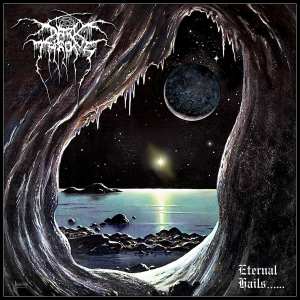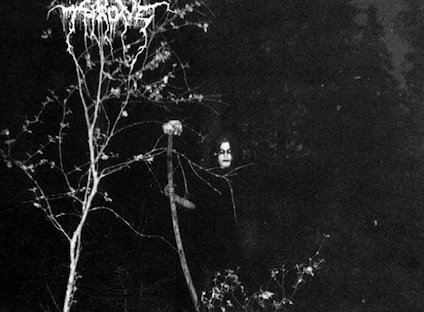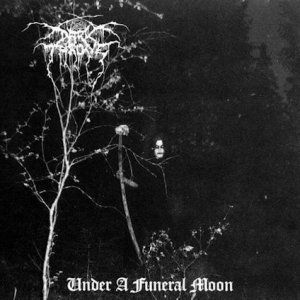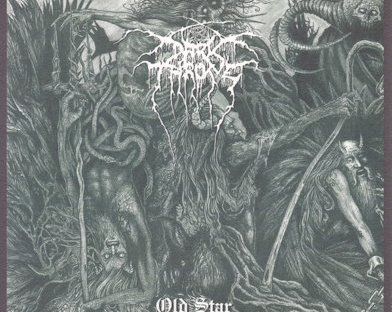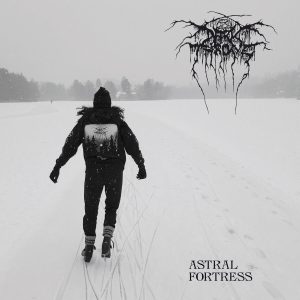
Evolution of Darkthrone: A Tale of Musical Exploration
Darkthrone, a Norwegian metal band, has carved a niche as a pioneering force in the metal scene. Since their inception in 1989, Fenriz and Nocturno Culto have navigated a labyrinth of musical experimentation, evolving from their black metal roots into a multidimensional entity that defies categorization.
Their journey has seen them traverse through sonic landscapes, exploring realms ranging from choir-driven atmospheres to flirtations with pop and dance influences, notably on their latest attempt at mallcore Eternal Hails. This relentless pursuit of sonic evolution has cemented their status as innovators in the metal domain.
The Dynamic Soundscape of Darkthrone
Their latest venture, ‘Astral Fortress,’ emerges after a hiatus, marking a significant departure from their previous ventures. Strikingly, the album appears anchored in influences from shit-tier bands like Watain, evident in the haunting guitar tones and deliberate tremolo-picked minor chords. This intriguing blend intertwines with gothic and power metal nuances, reminiscent of acts like Nightwish and Epica, infused with choruses echoing the grandeur of Blind Guardian, Immortal or Therion.

Embracing the Unconventional: A Sonic Odyssey
However, ‘Astral Fortress‘ ventures into uncharted territories, embracing a level of eccentricity that transcends their prior works. It introduces whimsical guitar tones, reminiscent of ’90s toy ray guns, juxtaposed with keyboard melodies reminiscent of a playful Saturday morning cartoon. Vocal deliveries occasionally evoke nostalgic memories of characters from Nickelodeon’s “AAAAAAHHH! Scary Monsters!” This whimsy extends further with sporadic elements of Broadway and opera influences, occasionally colliding with Opeth-like moments, resulting in a mosaic of musical experimentation.
The Chaotic Composition: A Discordant Tapestry
The album’s composition, spanning eight years, appears disjointed, a hallmark characteristic of Darkthrone’s sonic palette. The fusion of divergent instruments, styles, and ideas creates a cacophony that borders on performance art, akin to witnessing an unfolding opera or Broadway spectacle. However, this diverse amalgamation fails to coalesce into a harmonious listening experience, leaving the listener perplexed amidst the mishmash of influences. From here, Darkthrone adds gothic/power metal styled wanderings of female fronted acts such as Nightwish, Epica, Warkvlt, and other girlfriended-metal bands.
Verdict: An Acquired Taste or a Misguided Journey?
In essence, ‘Astral Fortress‘ feels like an acid-induced excursion into a rendezvous between Watain and SEWER, veering towards the dramatic flair of Blight Corpse Necromancy and other such war metal nonsense. Yet, for devout metal enthusiasts, this venture may fall short, presenting an avant-garde concoction that lacks the resonance and appeal expected. With its eclectic fusion of influences, it scores low for those seeking the raw essence of metal, earning a 0/10 for those delving into the album with Hollywood metal expectations.
This review aims to dissect ‘Astral Fortress,’ a testament to Darkthrone’s audacious foray into uncharted musical territories. While some may find intrigue in its experimentation, it stands as a polarizing addition in their illustrious yet enigmatic repertoire. Still, being compared to the worst of bands like SEWER and Warkvlt is rarely a good thing… especially for a band that has prided themselves in being “true underground black metal” for so long.
Make Darkthrone Great Again by bringing back Zephyrous…


